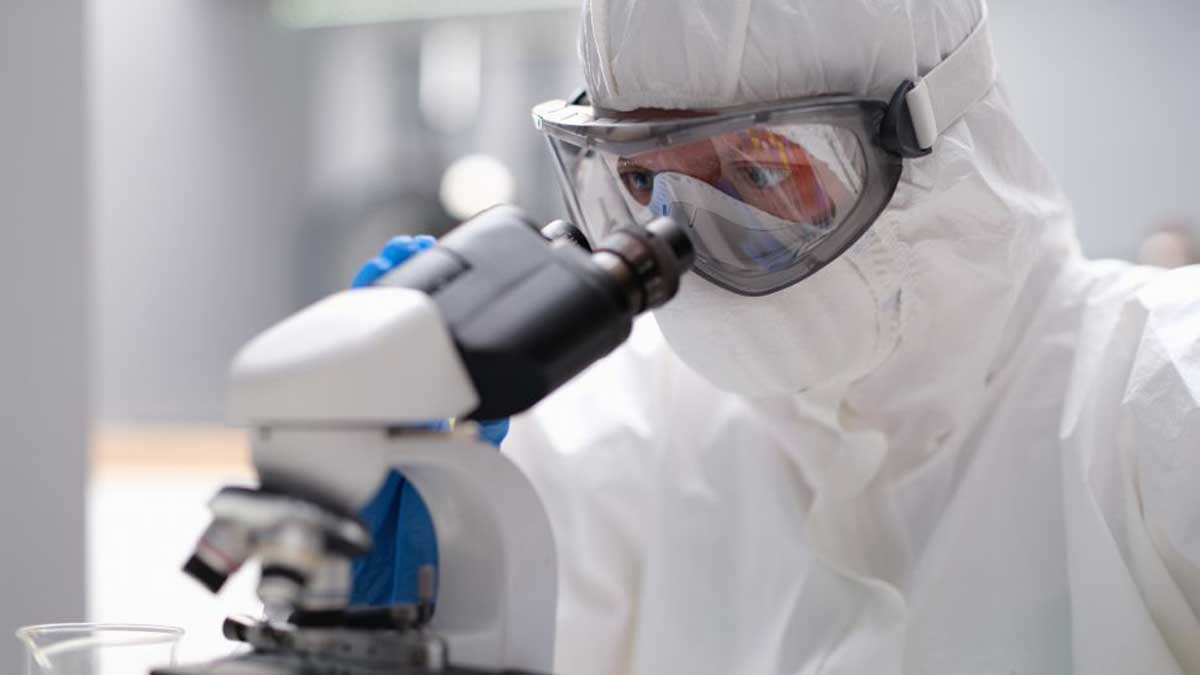Monkeypox is a rare disease caused by the monkeypox virus, which belongs to the genus Orthopoxvirus of the Poxviridae family. The genus Orthopoxvirus also includes the vaccinia virus (which causes smallpox), vaccinia virus (used in the smallpox vaccine), and vaccinia virus. Monkeypox is a viral zoonosis (a virus transmitted from animals to humans).
Monkeypox was first identified in 1958 when two outbreaks of a measles-like disease occurred in monkey colonies held for research, hence the name monkeypox. a period of intensified efforts to eradicate smallpox. In a 2005 paper, researchers stated that mass smallpox vaccination would likely limit the spread of monkeypox to humans for a time. However, cases are re-emerging in part due to a lack of immunity in later generations.
Since then, monkeypox has been reported in humans in several other countries in Central and West Africa: Cameroon, Central African Republic, Côte d’Ivoire, Congo, Gabon, Liberia, Nigeria, and Sierra Leone. Most of those infected are in the Democratic Republic of the Congo.
Cases of monkeypox in humans originating outside of Africa have been associated with international travel or the importation of animals, including cases in the United States, as well as in Israel, Singapore, and the United Kingdom.
The natural reservoir for monkeypox remains unknown. However, African rodents and primates (such as monkeys) can transmit the virus and infect humans.
What are the symptoms of monkeypox?
In humans, the symptoms of monkeypox are similar to but milder than those of smallpox. Monkeypox initially presents with fever, headache, muscle pain, and emaciation. The main difference between the symptoms of smallpox and smallpox is that smallpox causes swollen lymph nodes (lymphadenopathy). The incubation period (time from infection to onset of symptoms) for monkeypox is typically 7–14 days but can vary from 5 to 21 days. The disease begins with:
- fever;
- Headache;
- Muscle pain;
- Backache;
- Enlarged lymph nodes;
- Chills;
- Fatigue
Within 1-3 days (sometimes more) after the onset of fever, the patient develops a rash, often starting on the face and then spreading to other parts of the body. Lesions (skin lesions) go through the following stages before passing through:
- Macules – limited areas of skin less than 1 cm in size, different from the surrounding skin in color, but not rising;
- Papules are nodules or nodules the size of lentils;
- Vesicles – small raised bubbles filled with fluid, located in the upper layers of the skin;
- Pustules – purulent pimples;
- Scabs – the formation of crusts when restoring the integrity of the skin.
The illness usually lasts 2-4 weeks. In Africa, monkeypox is fatal in 1 in 10 of those infected.
How is monkeypox transmitted?
Monkeypox infection occurs when a person comes into contact with a virus transmitted by an animal, human, or contaminated material. The virus enters the body through broken skin (even in the absence of visible damage), respiratory tract, or mucous membranes (eyes, nose, or mouth).
animal-to-human transmission can occur through a bite or scratch, eating meat from an infected animal, direct contact with body fluids or material from an animal’s lesion, or indirect contact with lesion material, such as an infected one. bed dress.
It is assumed that transmission of infection from person to person occurs mainly by airborne droplets. Airborne droplets usually cannot spread long distances, so prolonged face-to-face contact is required for infection to occur. Other modes of human-to-human transmission include direct contact with body fluids or lesion material and indirect contact with lesion material, such as through contaminated clothing or bedding.
The reservoir host (primary disease vector) for monkeypox is still unknown, although African rodents are thought to play a role in transmission.
What is the prevention of monkeypox?
There are several measures that can be taken to prevent simian virus infection:
- Avoid contact with animals that can transmit the virus (including animals that are sick or found dead in monkeypox areas);
- Avoid contact with any materials, such as bedding, that a sick animal has come into contact with;
- Isolation of infected patients;
- Practice good hand hygiene after contact with animals or people. For example, wash your hands with soap and water or use an alcohol-based hand sanitizer;
- Use of personal protective equipment when caring for sick patients
JYNNEOS (also known as Immune or Imvanex) is an attenuated live virus vaccine approved by the US Food and Drug Administration to prevent monkeypox. The Advisory Committee on Immunization Practices (ACIP) is currently evaluating JYNNEOS to protect people at risk of occupational exposure to orthopoxviruses such as smallpox and monkeypox.
There is currently no proven safe treatment for monkeypox virus infection. Smallpox vaccine, antiviral drugs, and vaccine immunoglobulin (VIG, a hyperimmune globulin formulated to treat some complications of vaccinia vaccination) can be used to control outbreaks of monkeypox.

